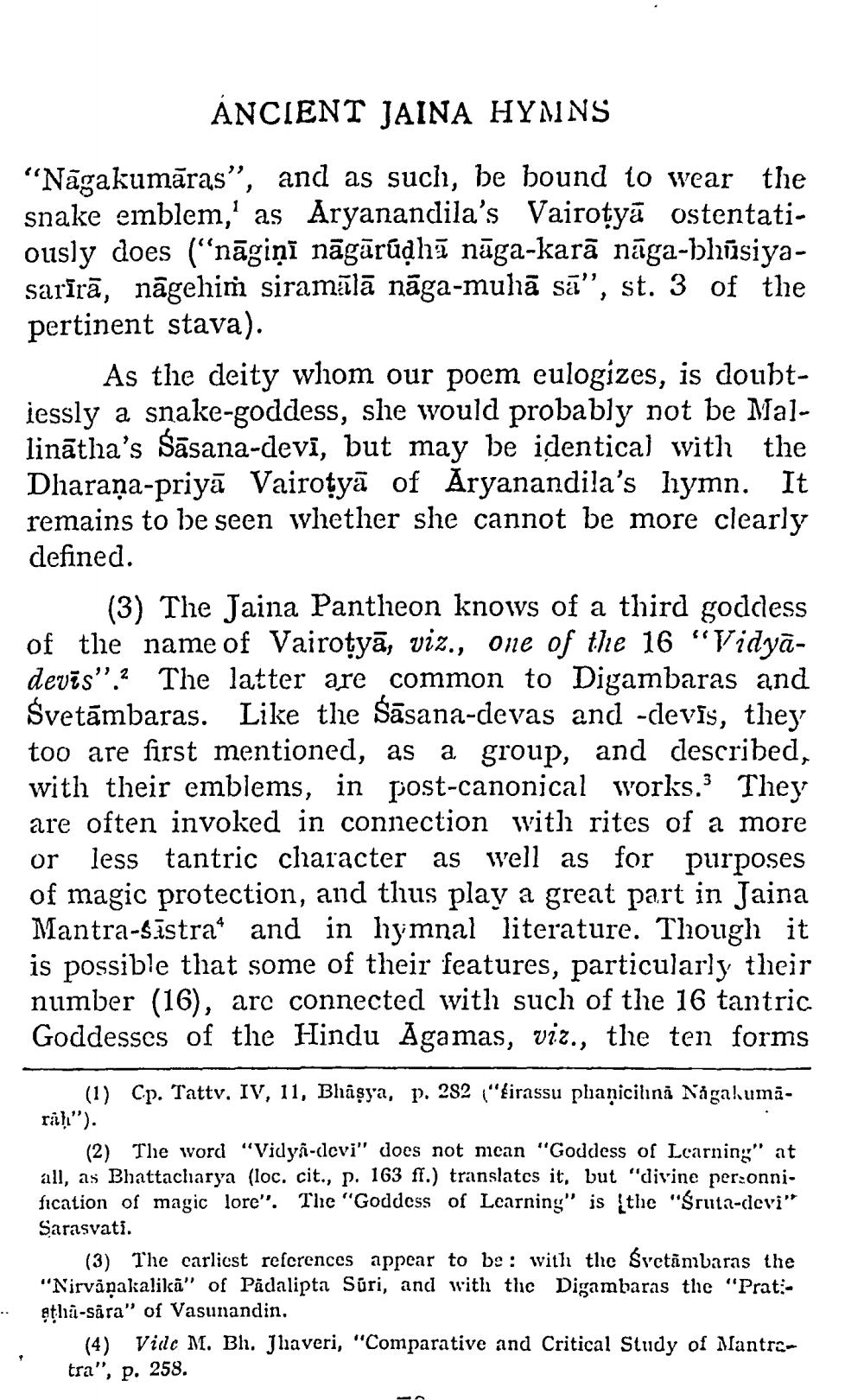________________
ANCIENT JAINA HYMNS
"Nāgakumāras”, and as such, be bound to wear the snake emblem, as Aryanandila's Vairotyā ostentatiously does ("nāgiņi nāgārudhā nāga-karā nāga-bhūsiyasarīrā, nāgehim siramālā nāga-mulā sā”, st. 3 of the pertinent stava).
As the deity whom our poem eulogizes, is doubtiessly a snake-goddess, she would probably not be Mallinātha's Sāsana-devī, but may be identical with the Dharana-priyā Vairotyā of Aryanandila's hymn. It remains to be seen whether she cannot be more clearly defined.
(3) The Jaina Pantheon knows of a third goddess of the name of Vairotyā, viz., one of the 16 "Vidyadevīs”.? The latter are common to Digambaras and Svetāmbaras. Like the Sāsana-devas and -devis, they too are first mentioned, as a group, and described, with their emblems, in post-canonical works. They are often invoked in connection with rites of a more or less tantric character as well as for purposes of magic protection, and thus play a great part in Jaina Mantra-Sīstra" and in hymnal literature. Though it is possible that some of their features, particularly their number (16), arc connected with such of the 16 tantric Goddesses of the Hindu Agamas, viz., the ten forms
(1) Cp. Tattv. IV, 11, Bháşya, p. 282 ("tirassu plianicilină Någakumaril”).
(2) The word “Vidyâ-devi" does not mean "Goddess of Learning" at all, as Bhattacharya (loc. cit., p. 163 ff.) translatcs it, but "divine personnification of magic lore". The "Goddess of Learning" is (the "Śruta-cevi" Sarasvati.
(3) The carliest references appear to be with the Svetimbaras the "Nirvaņakalikā" of Pädalipta Súri, and with tlic Digambaras thc "Prat:atha-sära" of Vasunandin.
(4) Vidc M. Bh. Jhaveri, "Comparative and Critical Study of Mantratra", p. 258.




